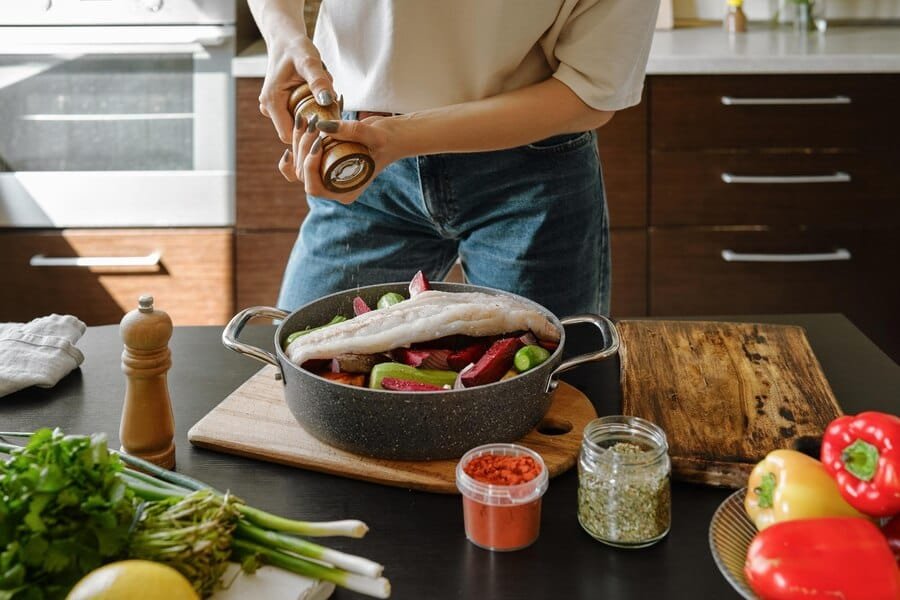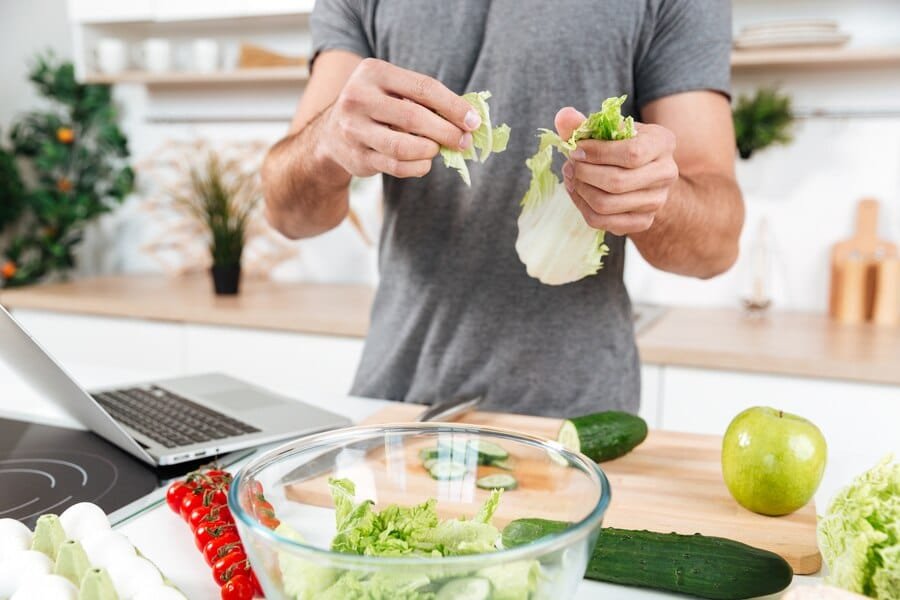
The beauty of one-pot cooking lies in its simplicity and efficiency. For those just starting their culinary journey, one-pot meals offer an approachable entry point into home cooking while minimizing cleanup and kitchen stress. Let’s explore everything you need to know about creating delicious, nutritious meals using just a single pot.
Read Also:
- Plant-Based Meals: Your Complete Guide to Sustainable Weight Loss Through Natural Nutrition
- USA Curry Recipes for Beginners: Easy & Flavorful Dishes You Can Make at Home
- Discovering the Art of Asian Vegetable Stir-Fry: A Culinary Journey
- Effective Mediterranean Diet Recipes for Sustainable Weight Loss: Healthy, Flavorful Meals to Shed Pounds
Why One-Pot Cooking Makes Sense for Beginners
For novice cooks, the prospect of juggling multiple pots and pans while timing different components of a meal can feel overwhelming. According to a survey by the Food Marketing Institute, 43% of Americans find cooking at home stressful, largely due to complexity and cleanup concerns. One-pot cooking addresses these pain points directly by streamlining the entire process. As noted by Cooking Light, this approach not only reduces kitchen cleanup but also allows flavors to develop more fully as ingredients cook together, creating richer, more cohesive dishes.
Essential Equipment for One-Pot Cooking Success
Before diving into recipes, it’s crucial to have the right equipment. A heavy-bottomed Dutch oven is arguably the most versatile piece of cookware for one-pot meals. America’s Test Kitchen’s comprehensive review of Dutch ovens highlights that these vessels excel at everything from braising to soup-making, with their thick walls providing excellent heat distribution. For those just starting, Better Homes & Gardens recommends a 5-6 quart enameled Dutch oven as an essential investment that will last for years. Alternatively, a large, deep skillet or a quality stainless steel pot can serve as excellent alternatives for most one-pot recipes.
Understanding One-Pot Cooking Techniques
The foundation of successful one-pot cooking lies in understanding basic techniques and timing. According to culinary experts at The Kitchn, proper ingredient preparation and layering are crucial. Start with aromatics like onions, garlic, and celery to build a flavor base. The order of adding ingredients matters significantly – harder vegetables need more cooking time than tender ones, and proteins often benefit from being seared first. This layering approach ensures every component is properly cooked without becoming mushy or overcooked.
Simple One-Pot Pasta Dishes for Beginners
One-pot pasta dishes represent perhaps the most accessible entry point into this cooking style. Traditional Italian cooking methods typically separate pasta cooking from sauce preparation, but modern techniques have shown that cooking pasta directly in its sauce can create equally delicious results while saving time and dishes. The food science experts at Serious Eats explain that cooking pasta in a more concentrated liquid actually helps create a naturally thicker, more flavorful sauce through the release of starches. This technique has revolutionized how we think about pasta preparation, especially for weeknight meals.
Hearty One-Pot Soups and Stews
Soups and stews are natural candidates for one-pot cooking, offering endless opportunities for experimentation while being incredibly forgiving for beginners. According to nutritionists at EatingWell, these liquid-based meals not only provide excellent nutrition but can also help with portion control and hydration. The key to successful soup-making lies in building layers of flavor through proper seasoning and understanding how different ingredients contribute to the final product. Starting with a mirepoix (diced onions, carrots, and celery) provides a classic flavor base that works well in almost any soup or stew recipe.
Rice-Based One-Pot Meals
Rice-based dishes offer another excellent opportunity for one-pot cooking success. Whether you’re making a simple pilaf or attempting a more complex paella, cooking rice with other ingredients allows it to absorb flavors while creating a complete meal. The rice experts at USA Rice Federation emphasize the importance of maintaining proper liquid ratios and heat levels when cooking rice-based dishes. Understanding these fundamentals opens up a world of possibilities for creating globally-inspired one-pot meals, from Spanish paella to Asian rice bowls.
Time-Saving Tips and Batch Cooking Strategies
One-pot cooking naturally lends itself to batch cooking and meal preparation. Food safety experts at the USDA provide guidelines for safely storing and reheating prepared meals, making it easier to plan ahead. Many one-pot dishes actually improve in flavor after a day or two in the refrigerator, as the ingredients have more time to meld together. This makes them ideal for busy individuals who want to cook once and eat multiple times throughout the week.
Troubleshooting Common One-Pot Cooking Challenges
Even with its simplicity, one-pot cooking can present certain challenges for beginners. The culinary professionals at Food52 offer solutions to common issues like preventing burning, adjusting liquid levels, and rescuing overseasoned dishes. Understanding these troubleshooting techniques helps build confidence and ensures better results in the kitchen.
Advanced One-Pot Cooking Techniques
As beginners gain confidence, they can explore more advanced one-pot techniques. The culinary experts at Bon Appétit suggest experimenting with different cooking methods within the same pot, such as braising, searing, and steaming. These techniques can be combined to create more complex dishes while still maintaining the simplicity of one-pot cooking. Understanding how to layer flavors and textures takes one-pot cooking from simple to sophisticated.
Sustainability and Economic Benefits
One-pot cooking aligns well with sustainable kitchen practices. According to environmental researchers at National Geographic, reducing water usage in cooking and minimizing cleanup can significantly impact household resource consumption. Additionally, one-pot meals often make excellent use of leftover ingredients, helping to reduce food waste. The economic benefits are equally compelling, as these dishes typically require fewer ingredients and less energy to prepare.
Health Considerations and Nutritional Balance
Creating balanced, nutritious meals remains important even when cooking in one pot. Registered dietitians at Harvard School of Public Health emphasize the importance of incorporating a variety of food groups into each meal. One-pot cooking can actually make this easier, as it allows for the combination of proteins, vegetables, and grains in a single dish. The key is choosing ingredients that complement each other both nutritionally and in terms of cooking times.
This comprehensive approach to one-pot cooking provides beginners with the knowledge and confidence needed to create delicious, efficient meals while developing their culinary skills. By understanding these fundamentals and practicing regularly, anyone can master the art of one-pot cooking and enjoy its many benefits.
For more detailed recipes and techniques, consider exploring resources from trusted culinary websites like Food Network, Epicurious, and Allrecipes, which offer extensive collections of tested one-pot recipes suitable for all skill levels. Remember that cooking is a journey, and starting with one-pot meals provides an excellent foundation for developing more advanced culinary skills over time.


